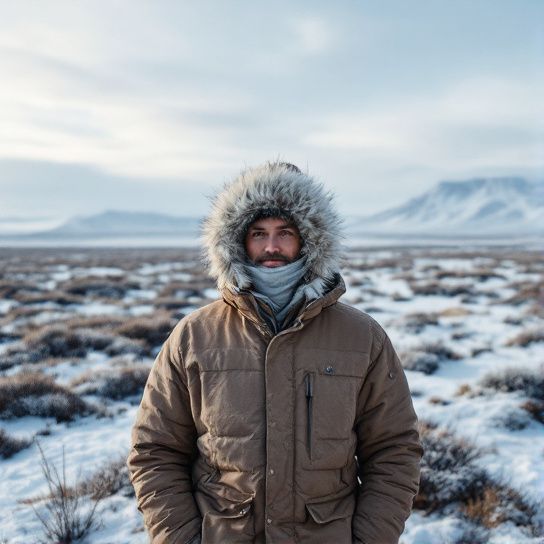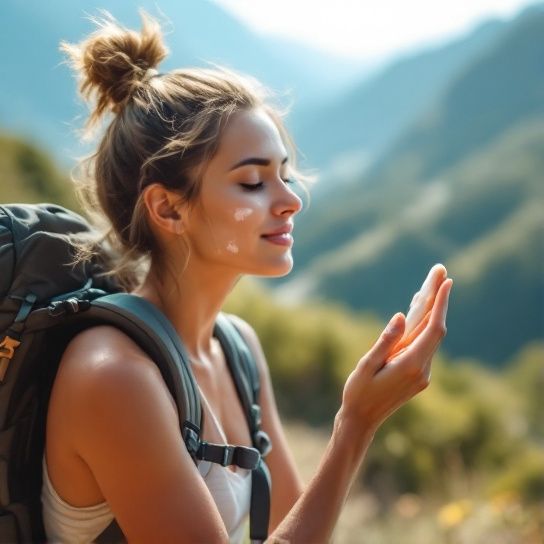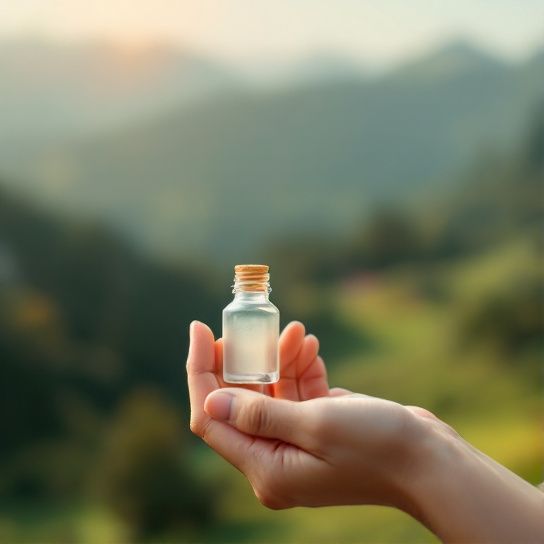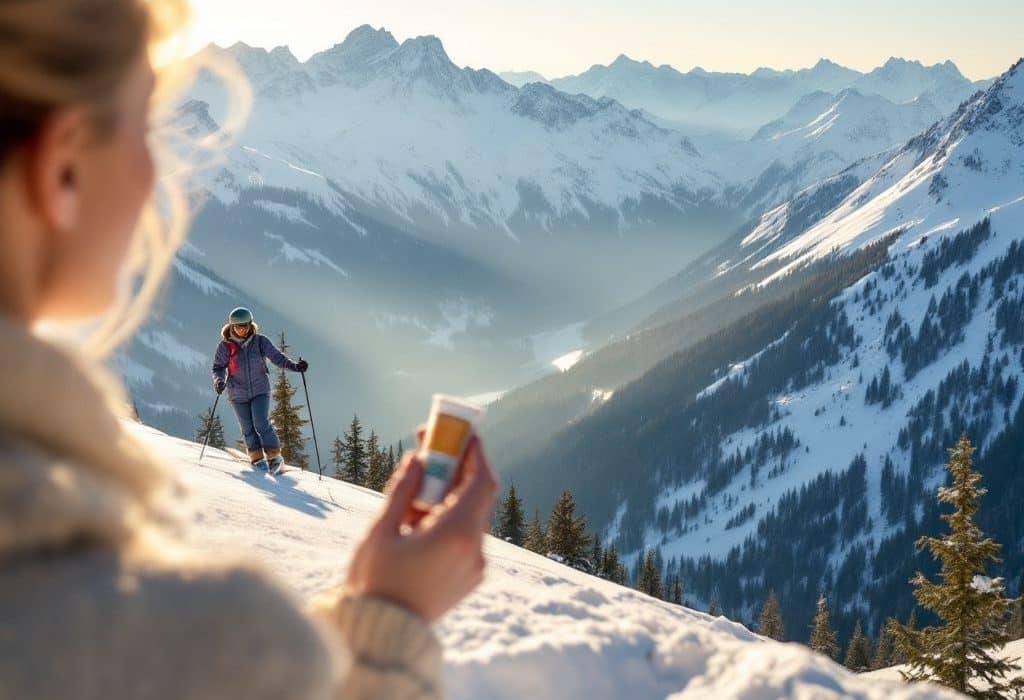Alright, so you’ve got your skiing outfit all picked out. Bright insulated jacket—check. The snuggest helmet, fancy new goggles, and skis tuned like a race car ready to tear down the slopes—double check. All set for an epic day of shredding powder, right? But let’s hold on for a moment. Have you thought about how to keep your skin in top shape amidst all this? If not, no worries! We’re diving into a Skiing Skin Protocol that’ll have your skin singing through the lodge window and beyond.
Let’s kick things off talking about something quite underrated yet absolutely crucial: natural skincare. Wait, skiing and skincare, what’s the connection, you ask? Let me fill you in. Skiing presents a unique set of challenges—wind, sun, and freezing air conspire to do a number on your skin. Trust me, you’ll want to give your ski care routine the TLC it deserves, keeping that skin as fresh as newly fallen snow.
The Chill That Thrills—and Drills
Let’s start with why this is such a big deal. Imagine this: you’ve just conquered that black diamond slope. The adrenaline is pumping, the endorphins rushing, but seconds later, you’re feeling the sting of cold against your cheeks, like winter itself is having a go at your face. Not to mention, there’s the sneaky sun, reflecting fiercely off the snow. You see where I’m going with this, right?
Stack that with a persistent wind that doesn’t seem to take a holiday, and you’ve got a combination that could leave your skin feeling like parchment paper by the end of the day. Fight the aftermath bruising on all those selfie-taking memories with a few easy-peasy tips that’ll keep you smooth and protected.

Trust Me on This: Start with Hydration
The foundation of good natural skincare, especially when you’re about to hit those pistes, is staying hydrated. Yep, just good ol’ water can do wonders. The thing is, skiing tends to dehydrate you quicker than you might think—chill air, physical exertion, and warming up in heated lodges sap moisture faster than you’d believe. So before we even talk anti-wind-burn defenses, how about giving your body a fighting chance with plenty of fluids?
Layering the Skincare—Like Your Clothes
Another nifty trick is all about layering. And no, I don’t mean thermal underwear, but skincare layers. Imagine this: you’re setting up your skin as you would for dressing—a basic primer if you will. Start with a hydrating moisturizer. Natural ingredients like aloe vera or hyaluronic acid work wonders here. These elements aren’t just fancy names on labels—they deeply hydrate and add a protective barrier.
After you’ve got that base down, venture into sunscreen territory. Now listen, I know how sunscreen feels like something summery, but the sun god does not take winters off. Go for a sunscreen that offers broad-spectrum SPF and keep it handy. Reapplying it throughout the day haters where many miss the train, so set reminders if it helps!
On Masks and Balms: Because Lip Balm is Only the Beginning

The next bit is a bit more indulgent, but who says skincare can’t be fun? Think masks and balms. A mask isn’t just something to indulge in during a night-in streaming your favorite shows. In fact, a rich overnight mask the night before skiing preps your skin marvelously. Choose one that’s heavy on the oils—coconut, avocado, anything that screams deep hydration.
And speaking of care, I’d be remiss not to mention lips! Ski care isn’t just for the face after all. Arm yourself with a nourishing natural lip balm. Look for choices with beeswax or shea butter—these act like the unsung heroes protecting those puckers from chapping amidst freezing winds.
Make Friendly with A Face Mist
Don’t knock it ‘till you try it but face mists can be wicked refreshing. Here’s a trick tailored for in-the-moment solutions. A spritz of a soothing face mist works wonders in hydrating and refreshing your skin during a quick break. It’s like offering your skin a phone-a-friend lifeline to combat sudden dryness or the harsh wind. Bonus: you might catch a few envious glances for being hip with on-the-go skincare.
A Few Friendly Reminders
Now here’s the thing: even with all this prep talk, your approach to ski care shouldn’t be one-size-fits-all. Your skin is as unique as your fingerprint, and climates vary gorgeously. Experiment a little, jot down what works and what doesn’t. Before long, it’s second nature. I’ll hint back to how checking products with thoughtful ingredients keeps things sailing smoothly—nature offers a bounty of components just as gentle and effective as they come.

Don’t Forget the Après-Ski
What, thought we were done? After a riveting day on the slopes, your skin is likely waving the white flag. Enters après-ski care—whatever injured that happens at the snow doesn’t stay there, folks! Once you’re warming your hands by the lodge fire or sipping on a festive beverage, don’t skimp on revitalizing oils or post-activity creams. This is your skin’s moment to recover. Trust me, a calm, polished face looks even more stunning when tiredness melts away in a good skincare ritual.
Feel like giving it all a shot yet? With a little planning, plenty of natural skincare, and some fun spritzers along the way, heading out for ski days might very well become your skin’s favorite invigorating challenge, without any of the daunting dry, cracking reality.
In the world of skiing, blending fun with precaution isn’t just smart practice; it’s the lifeline to ensuring that the memories you capture on your epic adventures are complemented by a confident, healthy glow. Tender Foot care in ski care also plays a role, and while we might delve deeper another time in foot-focused battles, carry this strategy forward as a team player in your complete ski kit.
In short, give these little nuggets a whirl, tune into your own skin’s rhythms, and approach your snowy exploits with an added splash of skincare wisdom to ski, play, and thrive with flair!
Frequently Asked Questions
What are the benefits of using natural skincare products?
Natural skincare products offer several benefits, including hydration, nourishment, healing, and protection for the skin. They are free from harmful chemicals and parabens, making them a great choice for those with sensitive or allergy-prone skin. Natural ingredients like aloe vera, chamomile, and lavender provide gentle yet effective cleansing and protection. Additionally, these products have a low environmental impact as they are biodegradable and do not contain synthetic additives harmful to the environment[1][3][5>.
How do natural skincare products differ from synthetic skincare products?
Natural skincare products differ from synthetic ones in that they are sourced from plant-based materials and are minimally processed. Natural ingredients are rich in vitamins, antioxidants, and other beneficial compounds that can nourish and protect the skin. Unlike synthetic ingredients, natural skincare products are gentler and less irritating, making them suitable for sensitive skin. They also have a lower environmental impact due to their biodegradable nature and lack of harmful additives[1][3][5>.
What natural ingredients are commonly used in skincare products for their anti-aging benefits?
Several natural ingredients are known for their anti-aging benefits in skincare. These include aloe vera, jojoba oil, green tea, and rosehip oil. These ingredients help protect the skin from aging by providing hydration, nourishment, and antioxidant protection. They are also free from harmful chemicals and toxins that can cause long-term damage to the skin[1][3][5>.
Are natural skincare products suitable for all skin types, including sensitive skin?
Yes, natural skincare products are generally suitable for all skin types, including sensitive skin. Natural ingredients like coconut oil, peppermint, and shea butter are high in vitamins and antioxidants, making them nutritious and effective for skin health. These products are less likely to cause skin irritation because they do not contain harsh chemicals, artificial colors, or other by-products that can irritate the skin[3][5>.
References

